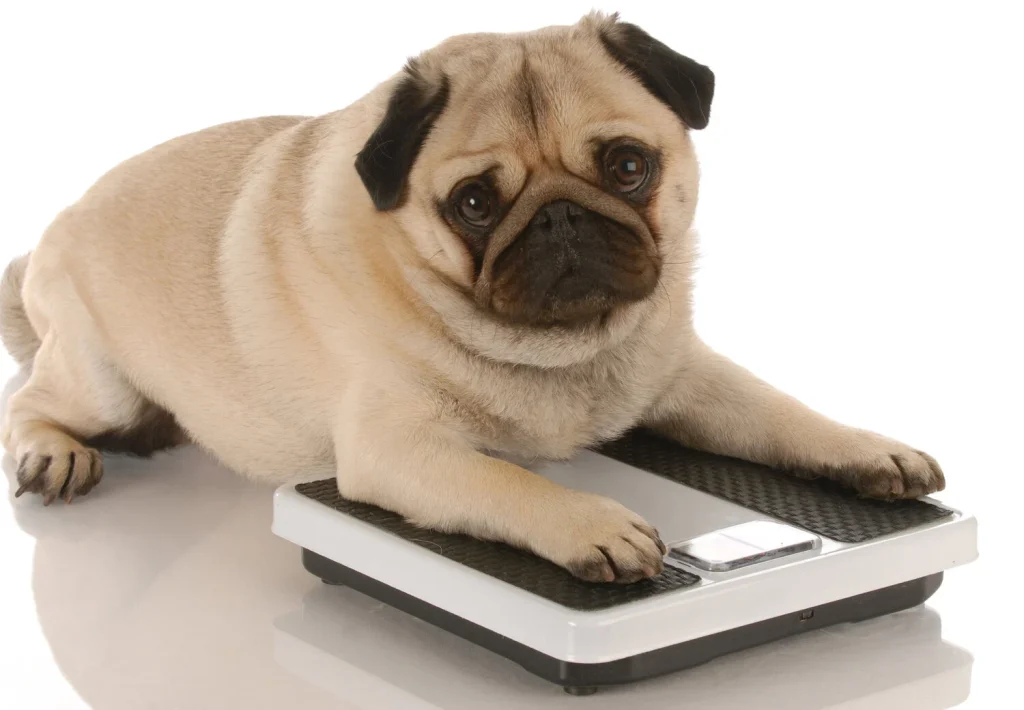Warning Signs Your Pet May Be Overweight
Obesity in pets is a growing problem around the world. Like humans, animals can gain excess weight when they eat too much and move too little. Many pet owners may not notice the early signs. But overweight pets are at risk of many health problems, including diabetes, joint pain, and heart disease.
Knowing the signs of pet obesity helps you take action early. Here are the most common signs your pet may be overweight.

1. You Can’t Feel Their Ribs Easily
One of the easiest ways to check your pet’s weight is to feel their ribs. Gently run your hands along their sides. You should be able to feel the ribs without pressing hard. If the ribs are hard to find or feel like they are under a layer of fat, your pet might be overweight.
For dogs and cats, the ribs should be covered with a thin layer of fat, not hidden. If you have to dig through soft flesh to find them, that’s a red flag.
2. No Visible Waist
Look at your pet from above. Healthy pets usually have a visible waist between the ribs and hips. In overweight pets, the waist disappears. The body shape becomes more oval or rounded.
Also, view your pet from the side. You should see a slight “tuck” in the belly area. If the belly hangs low or there is no tuck, it could mean too much fat is stored.
3. They Get Tired Quickly
Is your dog or cat less active than before? Do they avoid stairs or stop playing sooner than usual? Overweight pets often get tired fast. The extra weight makes it harder for them to move, run, or jump.
If your pet shows signs of low energy without any illness, weight could be the cause.
4. Heavy Breathing After Mild Activity
Pets should not pant or breathe heavily after short walks or mild play. If your dog is out of breath quickly or your cat pants after jumping, this may be a sign of excess weight.
Fat can press on the lungs and make it harder to breathe. If you notice this often, talk to your vet.

5. Difficulty Grooming
Overweight cats often have trouble grooming themselves. You may notice a greasy or matted coat, especially near the back or tail. If your cat stops cleaning its body like before, check their weight.
Dogs, too, may struggle to scratch or lick themselves if they’re too heavy. Extra fat can block normal movement.
6. Loss of Muscle Tone
Fat and muscle are not the same. An overweight pet may still lose muscle strength, especially if they are not active. You may see flabby legs or a sagging belly. Even though the pet looks “big,” the body may be weak.
Regular activity keeps muscles strong. A pet that gains weight and loses strength may be in trouble.
7. Joint Stiffness or Limping
Extra weight puts pressure on your pet’s joints. Over time, this causes pain, arthritis, and limping. If your dog or cat moves stiffly in the morning or avoids jumping, weight may be a factor.
Older pets are more sensitive to joint pain. Keeping them at a healthy weight helps reduce stress on bones and muscles.
8. Constant Begging for Food
Many pets love food. But if your pet is always begging, it might mean you’re feeding too often. Some owners confuse begging with hunger, but it can be habit or boredom.
Frequent treats and snacks add hidden calories. Keeping a feeding schedule and using healthy treats can help prevent weight gain.
9. You’ve Increased Their Collar or Harness Size
Have you adjusted your pet’s collar recently? A growing neck size may not mean muscle. It can be a sign of fat gain. If your pet’s harness or collar no longer fits, check their weight.
Frequent size changes are not normal for adult pets. Measure their weight regularly to keep track.
10. The Vet Mentions It
Sometimes, the clearest sign comes from the vet. If your vet says your pet is overweight, take it seriously. Even a small weight gain can impact their health. Follow your vet’s advice on diet, portion sizes, and exercise.
Vets can help set a healthy weight goal and track progress over time.
What Causes Pet Obesity?
Several things contribute to pet obesity:
-
Overfeeding and large portions
-
Too many treats and table scraps
-
Lack of daily exercise
-
Spaying/neutering (may slow metabolism)
-
Certain medical conditions (like hypothyroidism)
It’s important to understand your pet’s needs. Different breeds and ages have different energy levels and food requirements.
How to Help Your Pet Lose Weight
Helping a pet lose weight takes time and care. Here are some simple steps:
-
Measure food using a scale or cup
-
Avoid free-feeding (leaving food out all day)
-
Reduce treats, or switch to low-calorie options
-
Increase playtime or short walks daily
-
Talk to your vet for a weight loss plan
Never put your pet on a crash diet. Weight loss must be slow and steady.
Conclusion
Your pet’s weight affects their happiness, movement, and lifespan. Learning the early signs of obesity can protect them from future illness. Regular vet visits, good nutrition, and exercise are the keys to a healthy life.
If you’re planning to move or travel with your pet, especially internationally, their weight matters even more. Airlines have strict weight rules for pet transport. Overweight pets may face more stress or health risks when flying.
At Asiapata, we care about your pet’s health and comfort. Whether it’s local travel or international relocation, we make sure your pets are fit and safe to fly.
Further Reading:
- 5 Incredible Animal Stories That Will Melt Your Heart – Asia Pata
- Tình bạn giữa động vật và con người – Indochina Post














